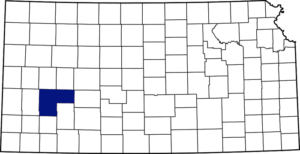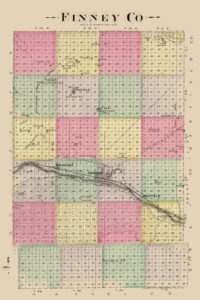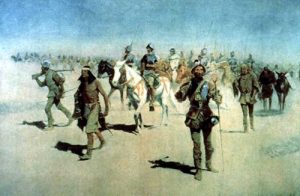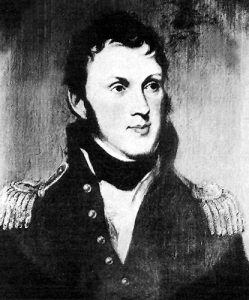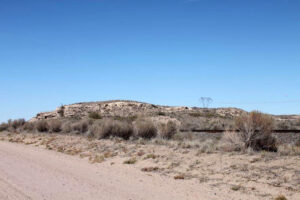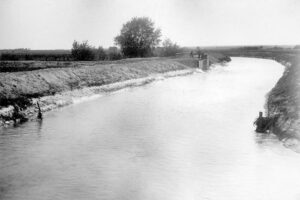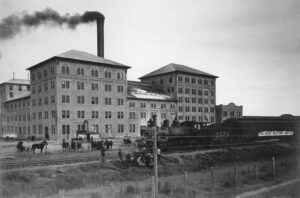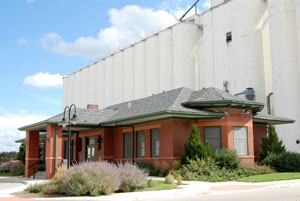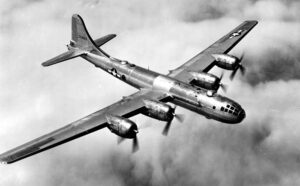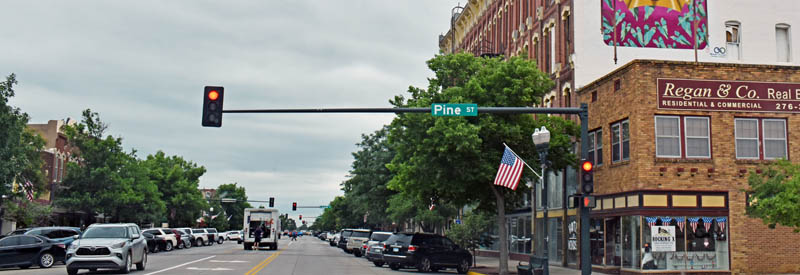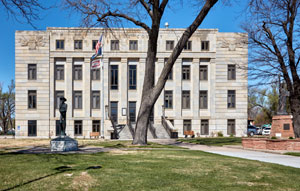Towns & Places
Friend – Unincorporated
Garden City – County Seat
Kalvesta – Unincorporated
Pierceville – Unincorporated
Extinct Towns of Finney County
Point of Rocks – On the Santa Fe Trail
Santa Fe Trail in Finney County
Garfield County, Kansas – Lost in County Seat War
Finney County, Kansas, in the southwest part of the state, is in the Arkansas River Lowlands. It was named for David Finney, the Lieutenant Governor of Kansas from 1881 to 1885. Its county seat and most populous city is Garden City. As of the 2020 census, the County population was 38,470.
The county is the third county north of the Oklahoma line and the third east of Colorado. It is bounded on the north by Scott and Lane Counties, on the east by Hodgeman and Gray Counties, on the south by Gray and Haskell Counties, and on the west by Kearny County.
The county’s surface is nearly level north of the Arkansas River and undulating prairie in the south, with a range of sand dunes. The flat plains were made of sand, silt, and gravel deposited over time by streams and rivers. The Arkansas River, which flows east from the Rocky Mountains, is often dry in this part of the state. The bottom lands along the Arkansas River averaged four to five miles wide. Natural timber was very scarce, with only a few cottonwood trees. Magnesian limestone was of a fair quality, and sandstone was found in the northeast. Clay for bricks existed in various parts of the county, and potter’s clay and gypsum were found in small quantities.
The land was once a prime hunting ground for the Arapaho and Cheyenne Indians.
This area was traveled by early explorers, including Francisco Vazquez de Coronado, Lieutenant Zebulon Pike’s Expedition, and the Santa Fe Trail. As proof of Coronado’s presence in Finney County, historians cite the discovery of an old two-edged sword in the northeastern part of the County, inscribed with the name “Juan Gallego” and a Spanish motto. The two-edged swords went out of use about 1600, so they must have been lost before that time.
Lieutenant Zebulon M. Pike passed through to Pikes Peak, Colorado, in 1806. His expedition extended southward into the Spanish possessions beyond Santa Fe, New Mexico, and his report sparked an interest that led to the establishment of extensive commerce along the famous Santa Fe Trail.
In 1820, a detachment from Major Stephen Long’s expedition under Captain Bell, accompanied by the celebrated entomologist Thomas Say, started down the Arkansas River from its headwaters. The party reached the state line near the present-day town of Coolidge, Kansas, on July 30, passed through present-day Finney County on August 1 and 2, and reached Great Bend on August 10.
The Santa Fe Trail was not really opened before 1822, although several traders had passed over essentially the same course several years earlier.
The Santa Fe Trail was the first highway established through Kansas by white men. It at once became and remained the most important route between the United States and the Spanish-Mexican settlements of New Mexico. The first wagon train passed over the trail in 1824, and the annual trade soon reached a volume of more than $200,000. The traffic was checked by the Mexican-American War, but was reopened again in 1850.
The Santa Fe Trail began in Independence, Missouri, entered Kansas east of the present city of Olathe, then southwest through Council Grove, striking the Arkansas River at the Great Bend, following up the north bank to where the present town of Cimarron now is, crossing the river at this point and entering what is now Finney County about three miles south of the river.
It then trended southwest and passed near the present site of Ivanhoe. It then continued southwest, crossing the north fork of the Cimarron River four miles east of the west county line and striking the Cimarron River just west of the county line. It then followed the Cimarron River out of the state near the southwest corner. Blazed later, the trail’s Mountain Route followed up the river’s north bank, passing through what is now Garden City and Lakin.
The Point of Rocks, one of several similar sites along the Santa Fe Trail, was a landmark that aided navigation on the trail. This outcropping, listed in the National Register of Historic Places, connected the Lower and Upper Arkansas River crossings. Upon reaching this site, wagon trains continuing west had to choose between the longer and rougher Mountain Route or the shorter and drier Cimarron Route, prone to Indian attacks.
By 1870, few people lived in Kansas. Few Americans lived west of the Mississippi River, which was generally wild and unsettled. However, Civil War veterans and land speculators were drawn to the possibilities and untapped potential of the Western United States.
While the traffic on the Santa Fe Trail continued to grow from year to year until it assumed immense proportions, the first settlers of Finney County came only with the completion of the great Atchison, Topeka & Santa Fe Railroad through the county, following the north bank of the Arkansas River, in October and November 1872. These first settlers were, in nearly every case, in the employ of the railroad at Sherlock (Holcomb), Lakin, and Pierceville stations. The whole county away from the railroad line was the feeding ground of vast herds of buffalo and antelope.
The last Indian raid ever made through Kansas, that of the northern Cheyenne under Chief Dull Knife, came through the eastern part of this county on their way northward in 1878.
In March 1878, William and James R. Fulton and a son-in-law, J. A. Stevens of Ohio, were the first to settle on the site of Garden City. Their houses were the only ones in the county except for section houses at Sherlock (Holcomb) and Pierceville. Other early settlers included T.A. Carlon, C.J. Jones, and John Stevens. By 1879, there were railroad stations: Pierceville, Garden City, and Sherlock.
In 1879, Charles Jesse Jones, John A. Stevens, William D., and James R. Fulton established Garden City. Jones, a particularly colorful character who earned the nickname “Buffalo” for his skills as a buffalo hunter, was integral to Garden City’s growth in its early days. He convinced the railroad to make the city one of its stops. Because of his efforts, Jones was named the city’s first mayor.
The building of canals began early. The first one was the Garden City Canal, built in 1879. In 1881, the Farmer’s Ditch was dug, and in 1882, the Great Eastern Canal was constructed.
Finney County began in about 1880 as Buffalo County and Sequoyah County, named after Sequoyah, a Cherokee Indian who developed the Cherokee alphabet. Later, Garfield County was created using some of its townships. However, six years later, Garfield County was declared unconstitutional.
Finney County was established on February 22, 1883. When the county was organized in October 1884, it covered a much larger area than the present one, as the counties of Kearny, Sequoyah, Grant, Arapahoe, Kansas, Stevens, Meade, and Clark, which existed before 1883, were dissolved to create Finney County. In Governor George Glick’s proclamation organizing the county on October 1, 1884, Garden City was named the county seat, and the following officers were appointed: Commissioners H.M. Wheeler, A.B. Kramer, and John Speer, as well as County Clerk H.E. Wentworth. At that time, the county’s population was 1,569 residents, 375 of whom were householders. Seven townships were created, including Garfield, Garden City, Ivanhoe, Pierceville, Pleasant Valley, Sherlock, and Terry.
Finney County was named in honor of Lieutenant Governor Finney, who was from Woodson County. When organized, Finney County had a population of about 1,500. The assessors’ returns for March 1885 show that the population had remained stationary. The summer of 1885 marked the beginning of the tide of immigration, and it has continued, increasing in volume ever since.
On December 6, 1883, the Sherlock Post Office was established.
The first Finney County courthouse was built in Garden City in October 1885 at the site of the present courthouse at North 8th Street.
Several consecutive years of rain and good crops brought many settlers in 1885 and 1886. Many were Eastern people unfamiliar with farming in Finney County’s climate, and as a result, they had to devise new farming methods and implements suited to the soil. Many of those who lacked the capital or the courage to do this went back east in a few years, but those who stayed were rewarded for their efforts, and enough newcomers joined them to make the land valuable.
In 1886, a blizzard with six feet or more of drift caused the death of about 100 Kansans and three-quarters of the cattle. Ranchers understood the difficulties of raising young calves in harsh winters and shipping cattle to distant feedlots.

Kansas Blizzard in January 1886.
In 1887, the Amazon Canal was established, with a capacity of 400 cubic feet and capable of irrigating 8,000 acres. These ditches remained in use into the 20th century, as many farmers lacked access to irrigation using windmills. Many of them learned to raise good crops of certain vegetables without irrigation by cultivating in a manner that conserves moisture.
In 1887, the county’s area was reduced in size, occupying less territory than it does now. When old Garfield County, formerly Buffalo County, was annexed in 1893, the size of Finney County increased. It now has a total area of 1,303 square miles.
The ranching, farming, and sugar beet industries sought innovative ways to adapt and thrive in the face of water limitations. A government irrigation plant was built at nearby Deerfield in the early 1900s for $250,000. The Arkansas River, which flows from west to east through the southern part, furnished water for irrigation purposes.
By 1902, Finney County had outgrown its small courthouse and had moved to a larger building at 113 South Main Street.
The Kansas National Forest was established in 1905 by President Theodore Roosevelt as an experiment to identify trees that could survive in dry climates. The executive order designated 80,000 acres in five Kansas counties, including Finney County, to plant various trees. Drought and prairie fire destroyed the trees, and homesteaders were allowed to settle on the land.
By 1900, the county began to see an influx of Mexican immigrants. They came to the United States, particularly to Kansas, looking for work on ranches and other jobs. Mexican culture has been integral to Finney County since that time.
A sugar beet factory was established in Garden City in 1906, and the industry greatly impacted the area’s economy. Upon its opening, several Mexican immigrants were hired.
In 1910, the Atchison, Topeka & Santa Fe Railroad followed the course of the Arkansas River through the county, running through Pierceville, Mansfield, Garden City, and Holcomb. The Garden City, Gulf & Northern Railroad extended north from Garden City through Gillespie, Alfalfa, and Tennis into Scott County. It was in the process of construction south into Haskell County.
The assessed property valuation at that time was $13,906,521, and the county population was 6,908, which made the average wealth per capita just over $2,000. The population increased from 1900 to 1910 by 3,439, or nearly 100%.
The county’s area was 829,440 acres, with about 300,000 under cultivation. The value of farm products was around $1.5 million per year. The principal crop was sugar beets, which in 1910 brought $252,000. The next in importance was alfalfa. Other grains and vegetables raised in commercial quantities included wheat, corn, oats, sorghum, broom corn, barley, milo maize, and Kafir corn. Livestock yields were about $250,000 per year. Dairy products, poultry, eggs, and honey brought the farmers nearly $100,000 yearly.
In 1929, the present Classical Revival style courthouse was built at 425 North 8th Street.
More Mexican immigrants decided to call the County home in the 1940s when they came to work on the region’s sugar beet farms. Today, more than half of the County’s residents are Hispanic or Latino.
Construction began on a U.S. Army Air Force base near Garden City during World War II. Its mission was to provide training for crews on the new B-29 Superfortress. The aircraft was essential to the war effort on the Pacific Front. It served as a redeployment point for those returning from the European Theater and preparing for a tour in the Pacific. After the war, the airfield base was deeded to the city as the municipal airport.
In the 1950s, Earl Brookover established the first commercial feed yard in the Midwest in Garden City. The agricultural revolution helped to boost the beef industry in Kansas. The area’s feedlots and packing plants attracted businesses and workers. People from around the world were recruited to work in the meatpacking plants.
In the 1970s, Vietnamese migrants came to the area to work in the beef-packing plants.
In 2006, the region saw an influx of immigrants from Somalia, Burma, and Ethiopia. The vibrant county is one of the fastest-growing and most diverse in the state of Kansas. Between 2007 and 2008, Finney County became a majority-minority area.
The county is served by U.S. Highways 83 and 50/400, as well as Kansas Highways 156 and 23. Its economy consists mainly of farming and ranching, along with some manufacturing. Wheat, corn, and milo are the primary crops, along with soybeans, sunflowers, and alfalfa.
Finney County is approximately 200 miles west of Wichita, Kansas, and about 70 miles east of the Colorado border. It is the second-largest county in Kansas, covering 1,296 square miles.
©Kathy Alexander/Legends of Kansas, updated April 2025.
Also See:
Extinct Towns of Finney County
Sources:
Blackmar, Frank W.; Kansas: A Cyclopedia of State History, Vol I; Standard Publishing Company, Chicago, IL 1912.
Blanchard, Leola Howard; The Conquest of Southwest Kansas, Wichita Eagle Press, 1931.
Cutler, William G; History of Kansas; A. T. Andreas, Chicago, IL, 1883.
Finney County by the Kansas Historical Society, 1950
Finney County Visitors Bureau
Kansaspedia
Lindner, F. Claudine; History of Garfield County, Kansas; Master’s Thesis, University of Wyoming, 1949.
Roots Web
Wikipedia


